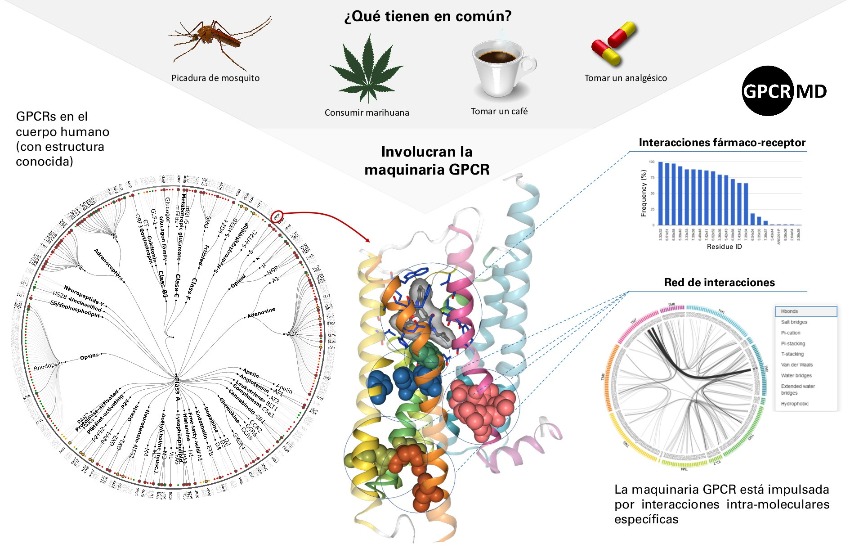
14/07/2020 - Press release
The results from this study, published in Nature Methods, can support the development of new drugs fighting Alzheimer’s disease or cancer
G protein-coupled receptors (GPCRS) are one of the key elements mediating basic stimuli like our response to mosquito bites or to this last-minute goal scored by our favorite football team. In fact, these proteins are the target of almost 40% of the currently approved drugs. However, until now, researchers did not have access to a tool employing molecular simulations to achieve a better understanding of GPCR function.
Therefore, a consortium of researchers from 23 different institutions of 10 different European countries and the United States have joined forces to design and build a tool that will help improve our understanding of the function of these receptors, which are responsible of transmitting signals to the interior of cells. The GPCRmd platform is the result of this work, lead and coordinated by the GPCR Drug Discovery group from the Research Programme on Biomedical Informatics (GRIB) of the Hospital del Mar Medical Research Institute (IMIM), the Pompeu Fabra University, and the Paul Scherrer Institute (PSI) in Switzerland, with support from the Autonomous University of Barcelona.
Dr. Jana Selent, Miguel Servet researcher at IMIM and main corresponding author of this study explains: "we have used state-of-the-art technology that requires highly specific knowledge, like molecular simulations, to build an online resource where scientists from different disciplines can easily inspect and analyze a comprehensive set of molecular simulations of GPCRs". This will allow, according to Dr. Ramon Guixà-González, postdoctoral researcher at PSI in Switzerland and co-corresponding author of this study, "to extract information that will be helpful in the study and development of new drugs targeting diseases as relevant as cancer or Alzheimer's disease". Other relevant authors of this study are Ismael Rodríguez Espigares and Mariona Torrens Fontanals, postdoctoral and predoctoral researchers at the GRIB.

Source: IMIM
Simulations at the atomic level to understand how GPCRs work
GPCRs are in cell membranes and transmit information of several physiological responses of the body into the interior of cells. Therefore, they have become an extremely relevant drug target. The new platform enables studying their function at a very small scale, namely at the atomic level, with the help of newly developed software. Using this software, the vast number of simulations, standardized through a common protocol, performed in this study by each member of the consortium can be visualized and inspected using a common web browser. This will allow any drug development researcher working in new treatments targeting GPCRs to exploit this open online resource.
Currently, this tool covers approximately 70% of GPCRs with known 3D structure. The aim of these researchers is to finally cover 100% of the GPCRs, and to develop a tool to perform these molecular simulations and their deposit into the resource in an automatic fashion. They also believe that the framework developed here for GPCRs can also be exported in the future to other relevant drug targets.

Research team. Source: IMIM
Reference article
Rodriguez-Espigares et al. GPCRmd unveils the dynamics of the 3D-GPCRome. 2020, Nature Methods; https://www.nature.com/articles/s41592-020-0884-y
Servei de Comunicació:
Marta Calsina Freixas(ELIMINAR)
Tel:
(+34) 93 316 06 80
Doctor Aiguader, 88
08226 Barcelona
© Institut Hospital del Mar
d'Investigacions MèdiquesLegal Notice and Privacy Policy | Cookie Policy | Site Index | Accessibility | Find Us | Contact